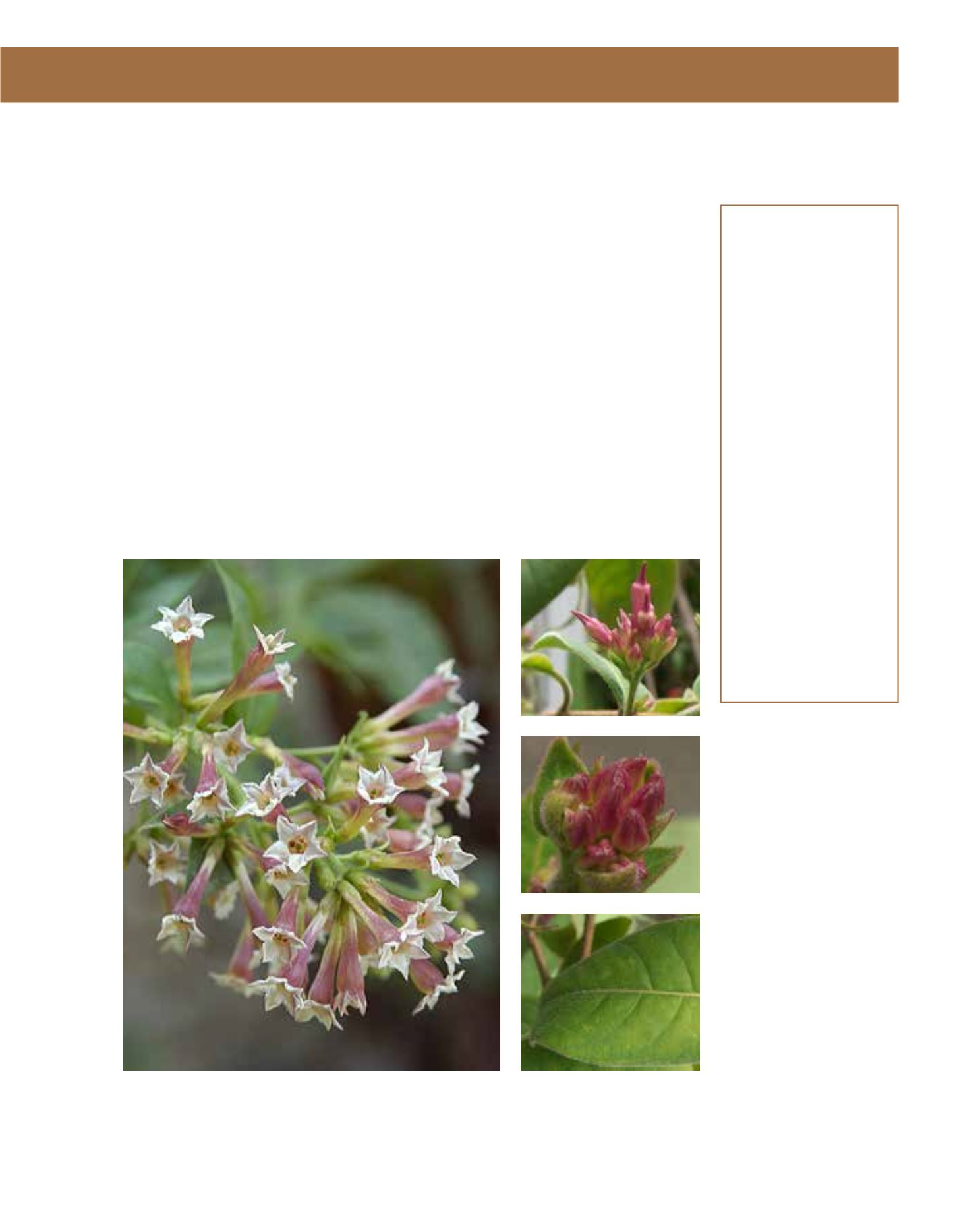

GENERAL
Origin
:
Mediterranean,
sub-tropical,
tropical
Vigour
:
fast growing
Humidity
:
semi-arid, semi-
humid
Propagation :
cuttings
Maintenance :
moderate
CONDITIONS
Dessication :
vulnerable
Stagnant water :
vulnerable
Irrigation
:
medium
Salinity/ppm :
moderate (1800
ppm)
Hardiness
:
-9°C
SHAPE
Type
:
shrub
Height
:
1 m-3 m
Spread
:
1.5 m-4 m
Foliage
:
evergreen
FLOWER
Colour
:
bright red
Size
:
6 cm - 10 cm
Period
:
May - September
FRUIT
Type of fruit :
berry
Fruit size
:
1 cm - 1.5 cm
This Mexican native shrub has arching branches reaching almost 3 metres in height. Red Ce-
strum develops large numbers of tubular, bright-red flowers in dense clusters on the twigs’ ends
that attract butterflies. The pretty display lasts from spring to early autumn. Pollinated flowers de-
velop violet-coloured berries that attract birds. The evergreen leaves are lance-shaped and hirsute.
High temperatures are no problem as long as soil moisture is plentiful. Alkaline soil may result
in cholorotic foliage. Yellow leaves may also be caused by full sun in unfavourable conditions.
The ground should be fertile and well drained. Light pruning can be done at any time of the year.
Low temperatures are tolerated down to –9°C, but prolonged periods of frost may harm the lea-
ves. They quickly recover in spring, since the shrub responds well to feeding. Pruning should be
performed during dormancy, but the shrub tolerates clipping at any time to keep a neat shape. For
this purpose, pinching out the tips of young branches is appropriate. C. elegans should not be ex-
posed to drying winds, which may cause necrotic leaf-margins. Regular irrigation in summer is
vital, but should be reduced in winter. Red Cestrum makes an accent bush in mixed borders both
in private and public gardens. It grows well in containers when drainage, feeding and irrigation
are well maintained. Flowering branches last quite long as cut flowers. Propagation is generally
performed by softwood cuttings that need some shelter to retain moisture.
96
Cestrum elegans,
Solanaceae
Red Cestrum
















